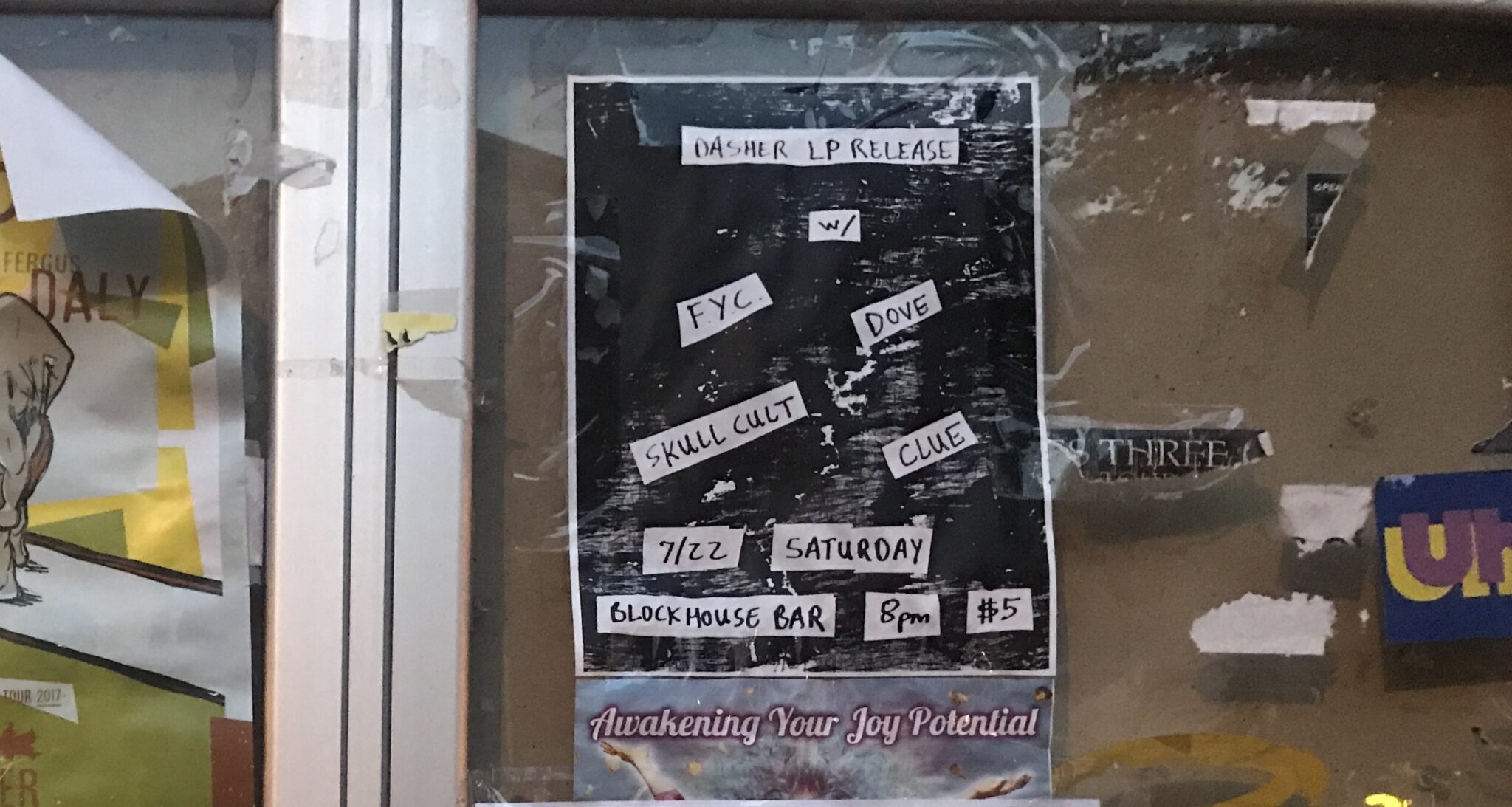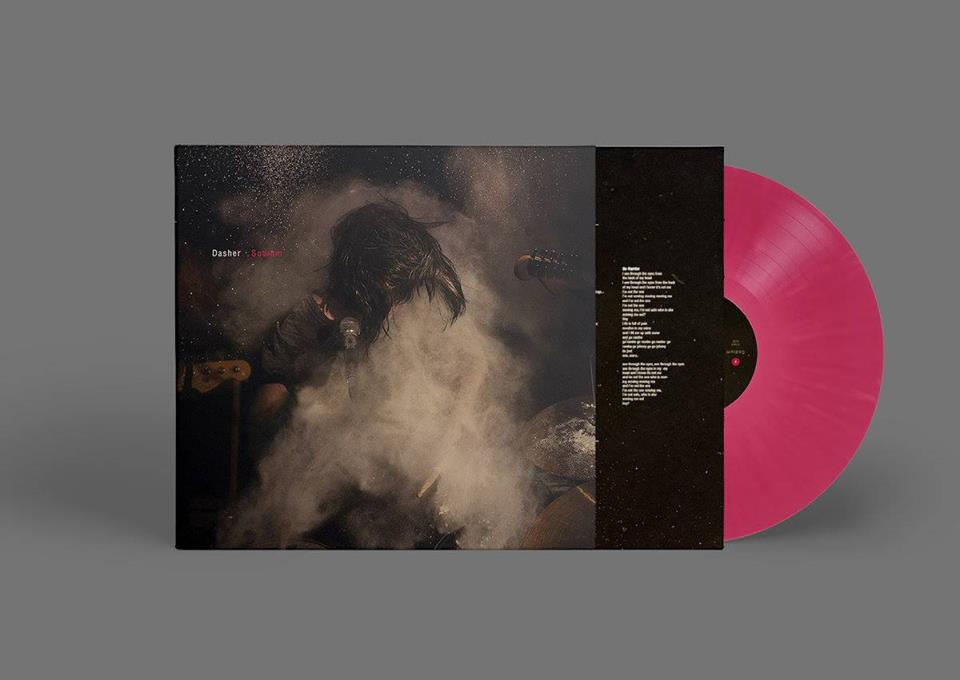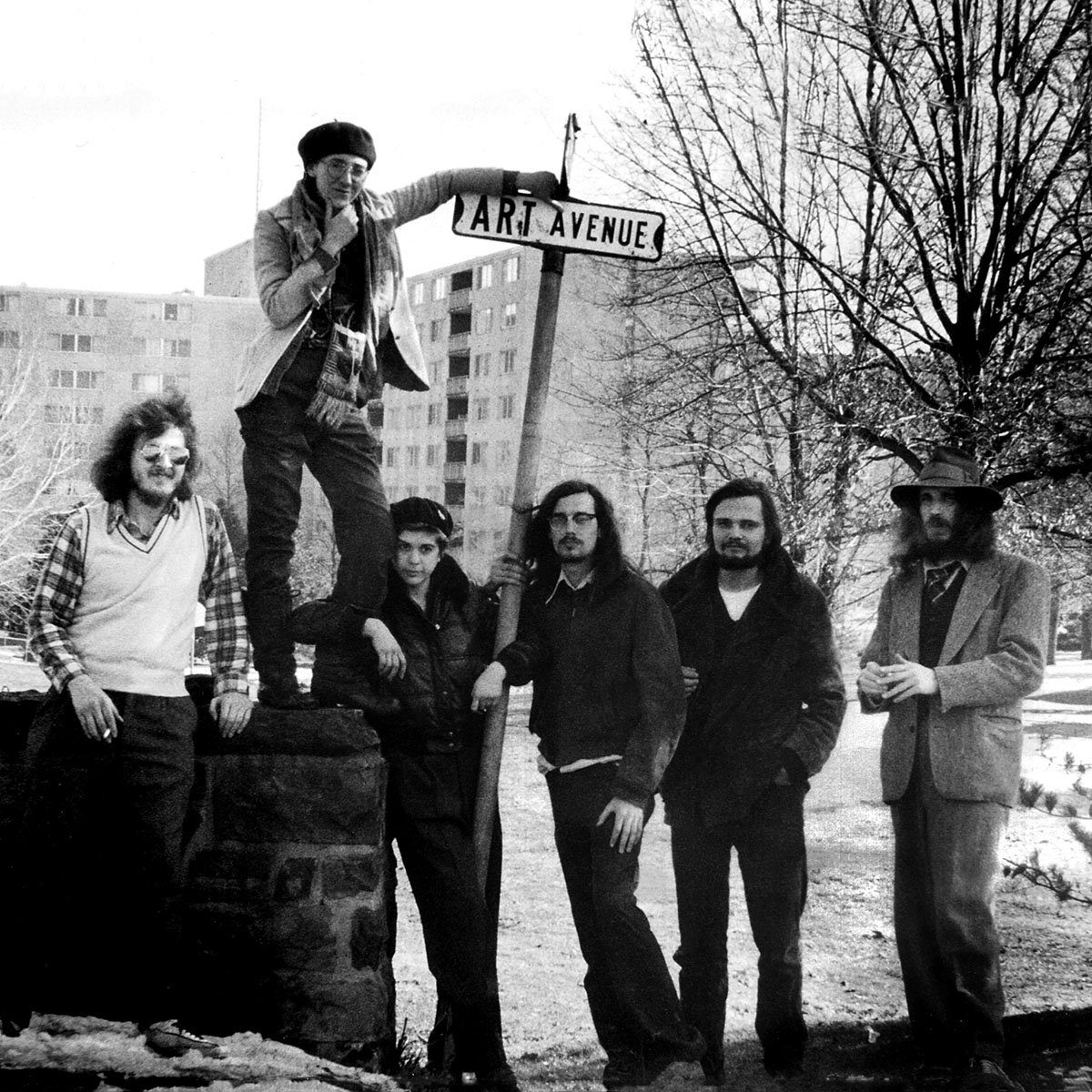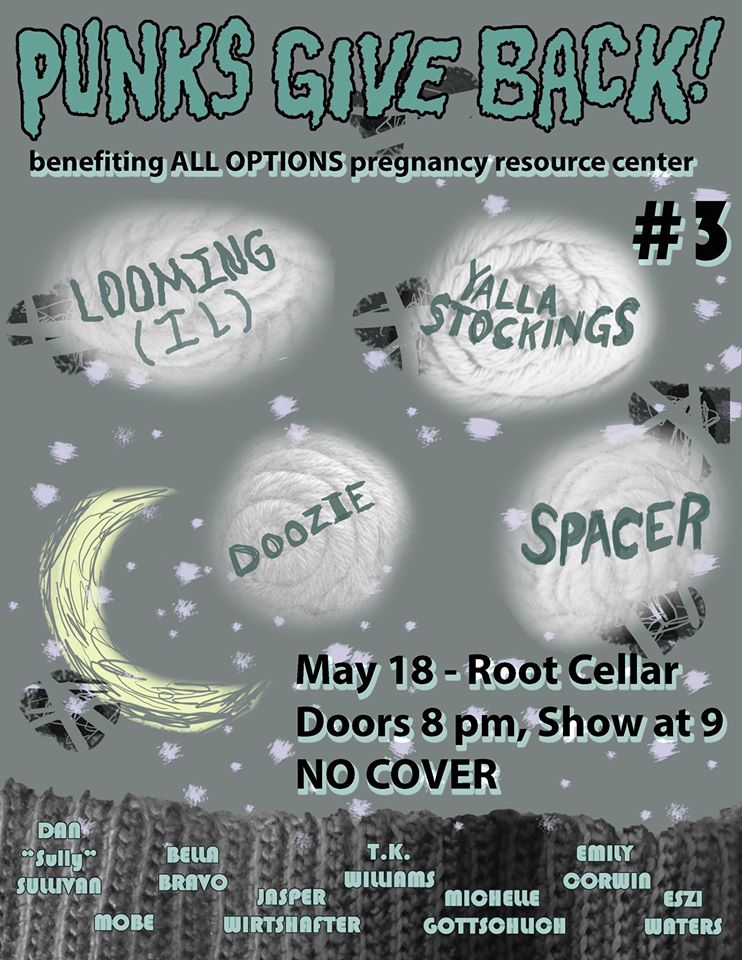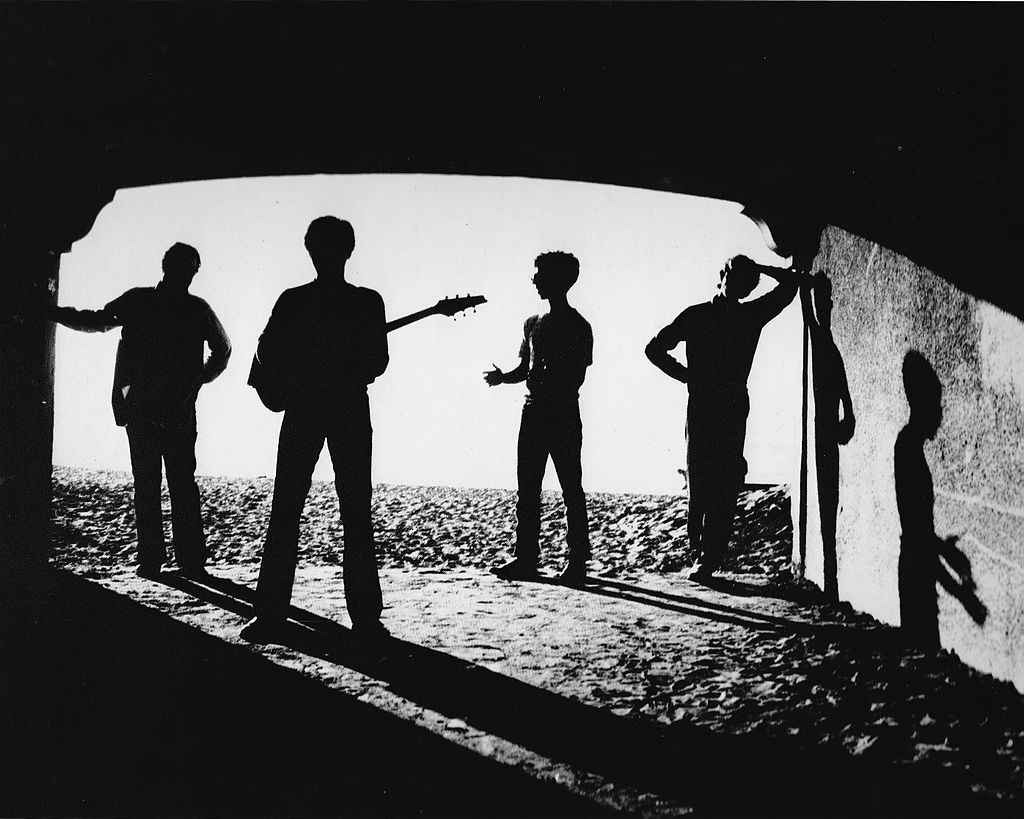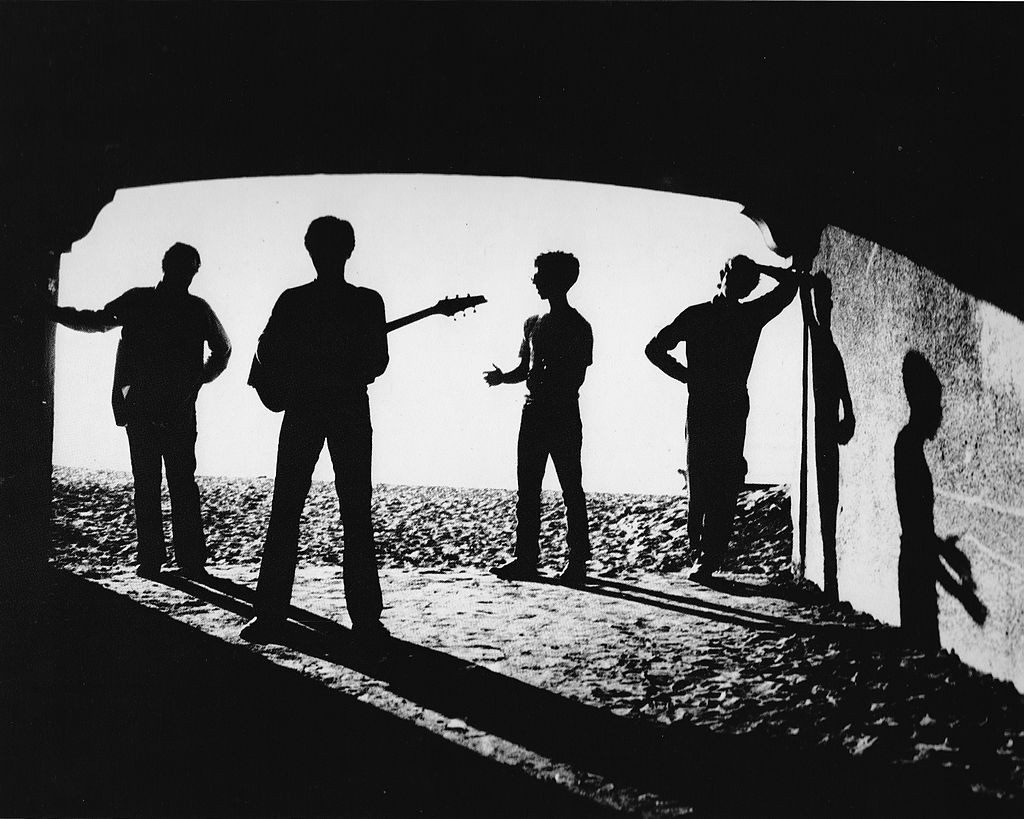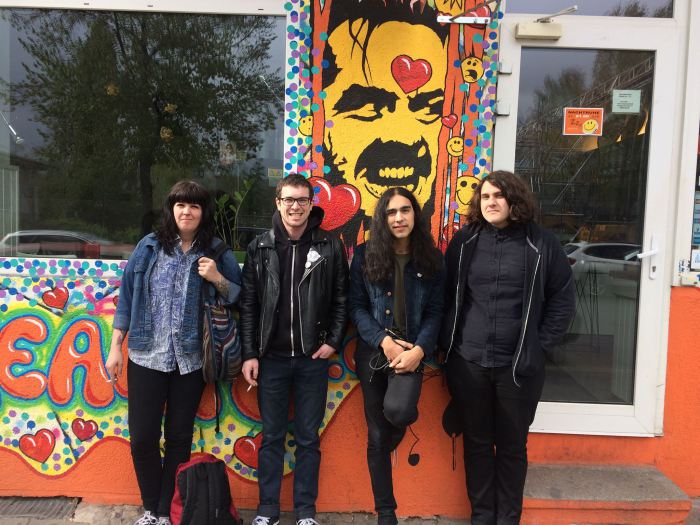
Kylee Kimbrough knocked over her drum set and walked off the stage as the crowd took pictures and cheered at the Dasher release party this weekend. Along with bandmates Gary Magilla (bass) and Derek McCain (guitar), she had just delivered a stormy live performance in celebration of Sodium, Dasher’s debut full length album. The eleven tracks on Sodium, an album that combines gloomy post-punk with hardcore vocal stamina, are at their best when experienced live. As I watched Kimbrough’s hair fly frantically across her face while she headbanged along to her rabid drumming and explosive vocals, I felt the music’s innate intensity more acutely than on the previous recorded listens in my bedroom.
Sodium had been in the works for quite a while before it was finally released on June 14. Kimbrough began releasing singles under the name Dasher in 2013 while living in Atlanta, Georgia. Upon relocating to Bloomington – home to Dasher’s record label, Jagjaguar – Kimbrough reassembled her band and released a string of singles, most of which are featured on Sodium. Since gaining regional traction, Sodium’s imminent release has been much anticipated, both locally and nationally.
While Dasher’s sound is best understood when experienced live, the studio-recorded version of Sodium is the next best thing. Kimbrough’s force, volume, and often speed are maxed out, but she always manages to find textured variation amongst the chaos. Sodium showcases that impressive vocal stamina and range. During “Get So Low,” macabre industrial instrumentals are accompanied by inaudible screams before the song crashes to its end. On “Trespass,” Kimbrough concludes each phrase with an unrestrained squeal. In the opening track, “We Know So,” she breaks down into exasperated growls as a biting guitar solo propels the music forward. This exasperation can be felt on title track, “Sodium,” where Kimbrough begs, “Please, please forgive me…you see right through me.” While Kimbrough has previously said that lyrics are a secondary importance to the sound and feel of the music, many of Dasher’s tracks provide a repetitive hook which serves as an anchor for listeners to sink their teeth into. Previously released singles “Soviet” and “Go Rambo” best represent this structure.
As the songwriter, vocalist, and drummer of Dasher, Kimbrough is able to demonstrate a bold control over both the rhythm and melody of the music, and showcasing this mastery is Dasher’s strong suit. On “Teeth,” for instance, Kimbrough spaces out her drumming while the vocals increase in ferocity. The lightning fast duple meter on “Resume” lets up on the chorus while the vocals become more desperate, only to come crashing back for the song’s final section. Conversely, on a floor tom heavy “Slugg,” drum and vocals work together, along with a heavy guitar line, to push each other to a synchronized climax.
While many of its tracks have been previously available for streaming, the release of Dasher’s first full length album represents Kylee Kimbrough’s long-term process and creative triumph. Much of Sodium is available for streaming and the entire album is available for downloading via Bandcamp. Dasher is on a countrywide tour this summer, which kicked off in Bloomington on July 22nd at the Blockhouse.

